Once the summer garden wanes, every devoted gardener is looking to extend their expression on into the fall. Why wouldn’t they? The alternatives are not pretty- sulking is not a good look. I understand that the love for the garden is not something that be turned on and off, like water from a spigot. Fall containers and plantings enable gardeners to take advantage of the fruits of the harvest, the late blooming perennials, and the cold tolerant annuals. Just today I spoke with a client who told me he hated this time of year-the coming of the end of the garden. Michigan is a great place to garden, as we do have four seasons-each distinctly different than the others. Why not take advantage of that?
Farmer’s markets and garden centers feature loads of fall plants, pumpkins, and gourds this time of year. There are mums and asters to be had, and pots of grasses, seeding. Petunias and salvias are all good with the cold. I will confess I buy lots of them-for my own garden, and my shop. But as blog reader Alan Fox put so clearly, I am driving with one eye to the road, and my gardener’s eye to what lies on the side of the road, or in my own garden, that might help make my fall containers more interesting.
Anyone who grows a perennial garden has fall material available to them. The thick stalks of perennial hibiscus, laden with seeds, dries beautifully. Bunches of ornamental grass, or dry hydrangeas are good looking. My own Acanthus mollis, or bear’s britches, has stems and seeds that are uncommonly beautiful. Any perennial or grass whose stems dry can enrich your description of the fall season.
Bear’s britches from my garden, and butterfly seed pods from the field next door make a great fall centerpiece. I did spray the acanthus with a clear sealer-this helps to glue the seeds in place. The brown dyed eucalyptus adds a little warm company. This pansy mix would be a little lonely all on its own, but it as a member of this group, it shines.
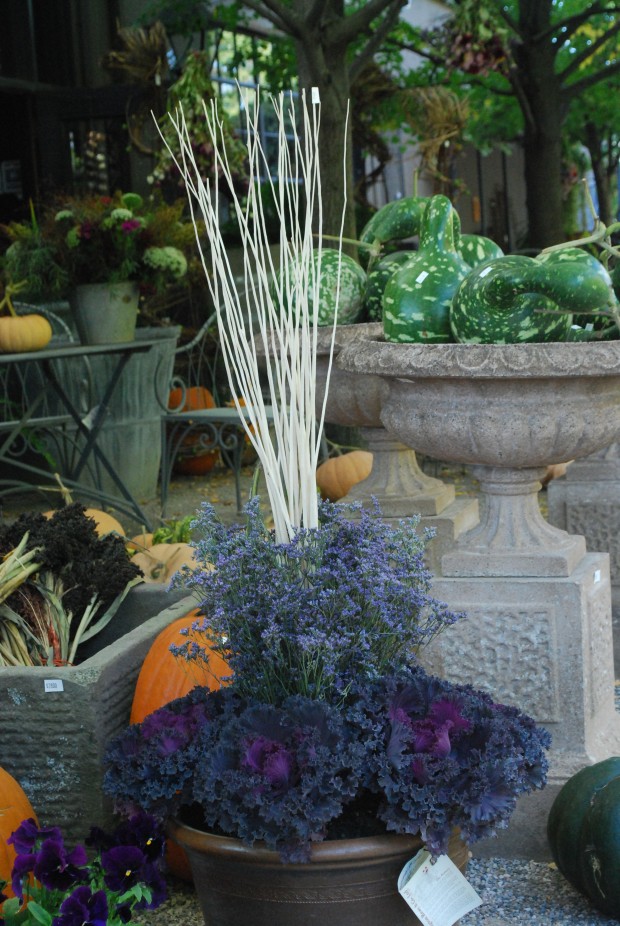
Statice longifolia is easy to grow, provided you have a loty of sun, and soil that drains in an instant. A mature plant in full bloom is like a cloud of lavender blue. Though that color is fairly short lived once it is cut, it lasts long enough to enrich a fall pot. The stems themselves are easy to dry.
The field next door has plenty of plants which have gone dormant. No end of wild plants have sturdy stems that can grace a fall container or display. Many are even strong enough to survive the winter intact. The field next door has grasses seeding, weeds going to their skeletal stage. The remains of the summer Queen Anne’s Lace, in a substantial mass-quite beautiful. The creams and browns may not be as showy as a delphinium in full bloom, but they have their own charm.
The fuzzy bits of these spotted knapweed stems are surprisingly sturdy. Centaurea stoebe is a short lived but very vigorous perennial one would not invite into a cultivated garden. But their remains are lovely.
Rumex crispus, or curly dock, has strikingly robust seed heads. It is just one of many materials that are readily available. Foraging the roadsides can be a treasure trove of natural materials for fall. The only time I would ever welcome a Canada thistle into my life would be the dead and dried version. In this form, I like it.
All those roadside weeds freshly matured into their fall forms, and arranged as a centerpeice can be quite handsome in a pot. This time of year, more than any other, I envy those gardeners with wild places on their property full of popple branches, rosa multiflora, chicory, butterfly weed, centaura, sumac and so on that look so graceful in a fall arrangement.
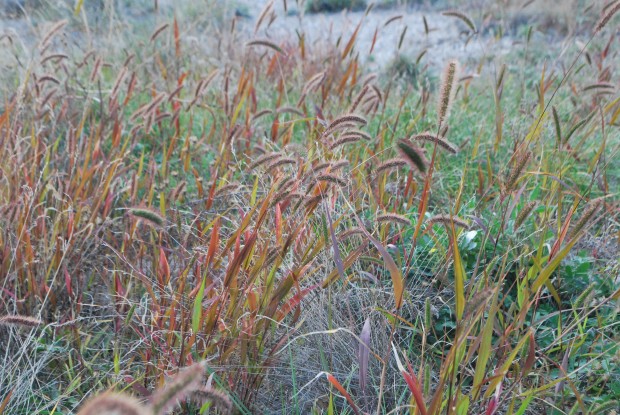

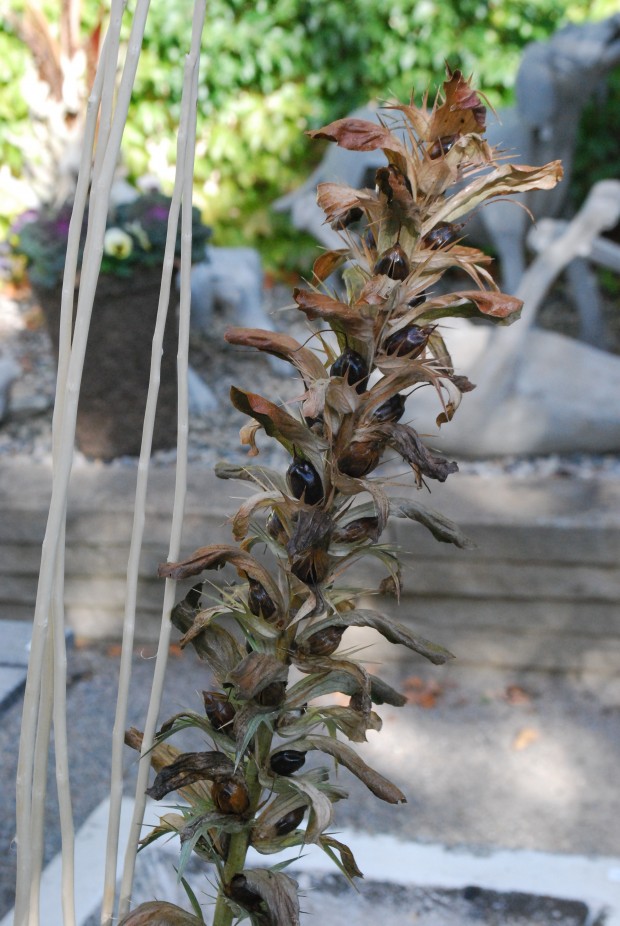

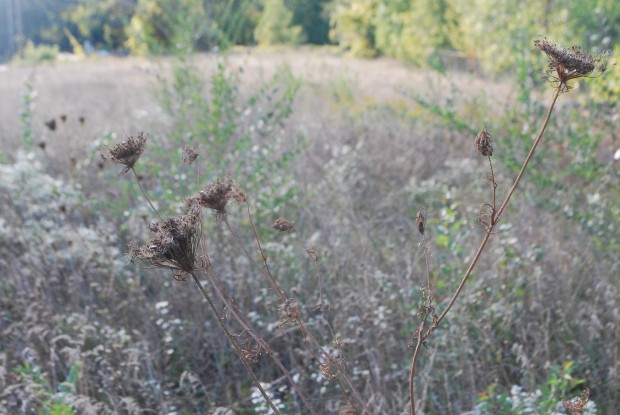

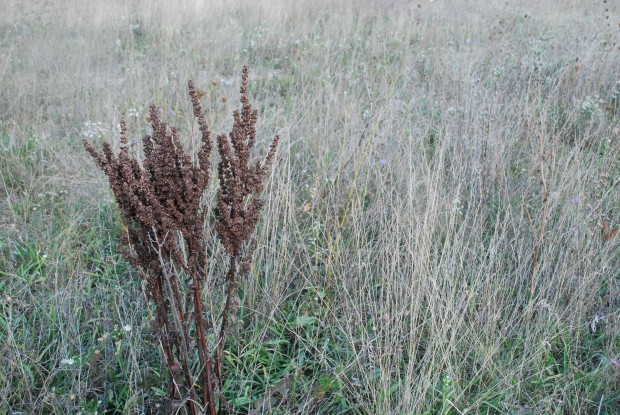
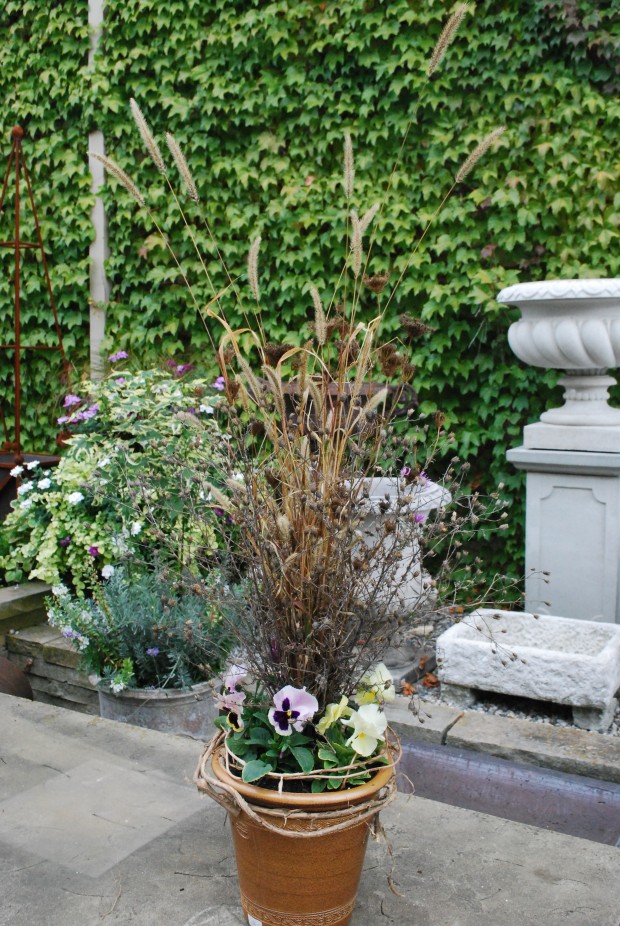
Come to me, we will walk in the french fields, looking for wild flowers !!
Delphine-this sounds unbelievably good! Would that I could…